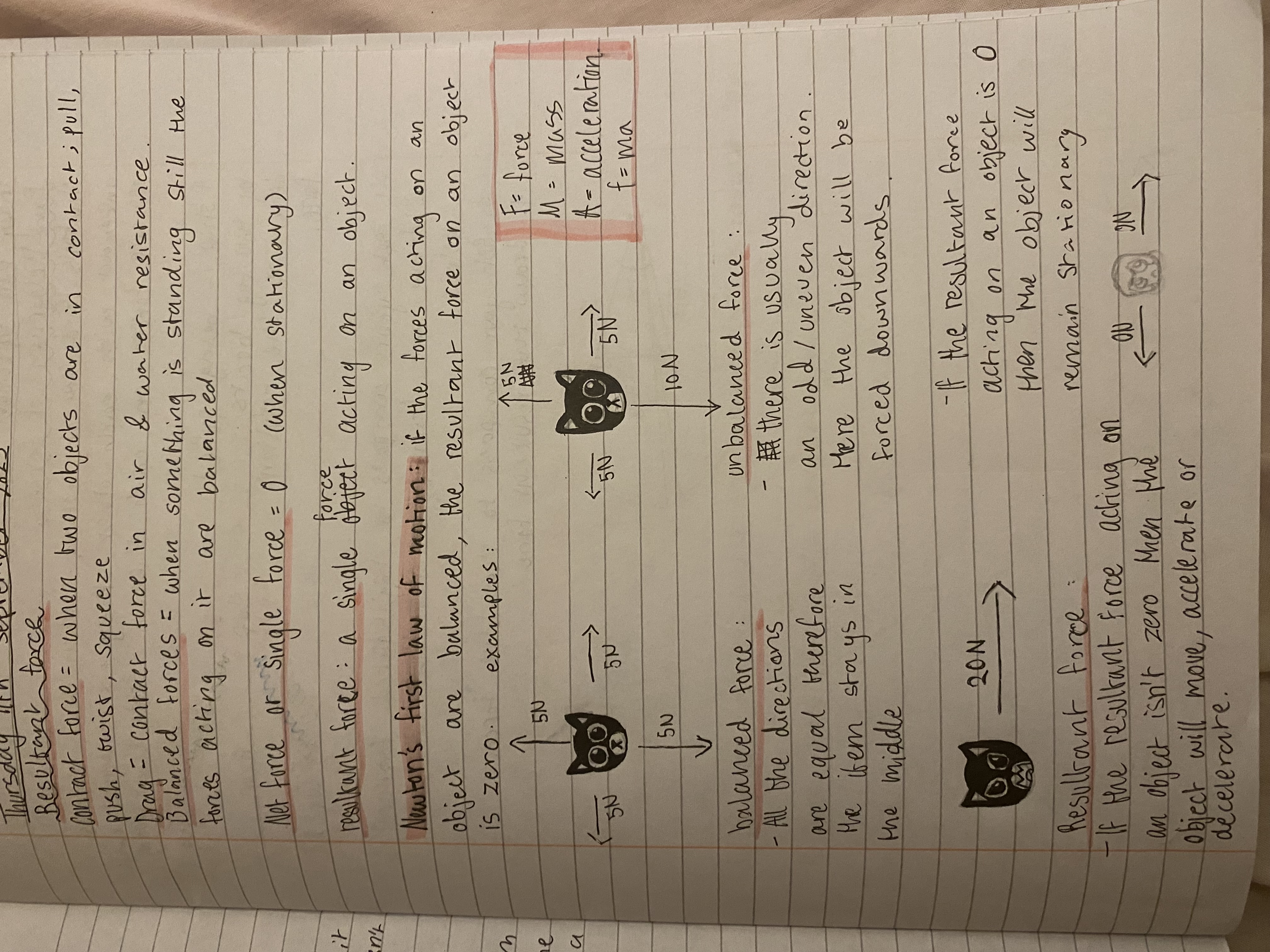newtons laws
1/5
There's no tags or description
Looks like no tags are added yet.
Name | Mastery | Learn | Test | Matching | Spaced |
|---|
No study sessions yet.
6 Terms
Newtons’ first law
If the forces acting on an object are balanced, the resultant force on an object is zero.

resultant force
Resultant force (single force acting on an object) : if the resultant force acting on an object isn’t zero then the object will move, accelerate or decelerate
If the resultant force is zero rhen the object remains stationary
Balanced force
all directions are equal and therefore the object stays in the middle
Newton’s second law
formula: Force = Mass x acceleration or F=MA
the more force on an object = the more acceleration applied
Meanwhile if the object is heavier = the harder it is to speed up
Unbalanced force
there is an uneven direction and the object will be pulled towards that uneven direction
Newton’s third law
When two objects interact with each other, they exert equal and opposite forces on each other
in simple terms: the objects are the same size but they act in opposite directions
For example: when you jump off a boat, you go forward but the boat moves backwards